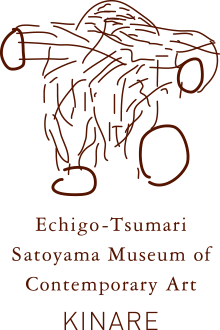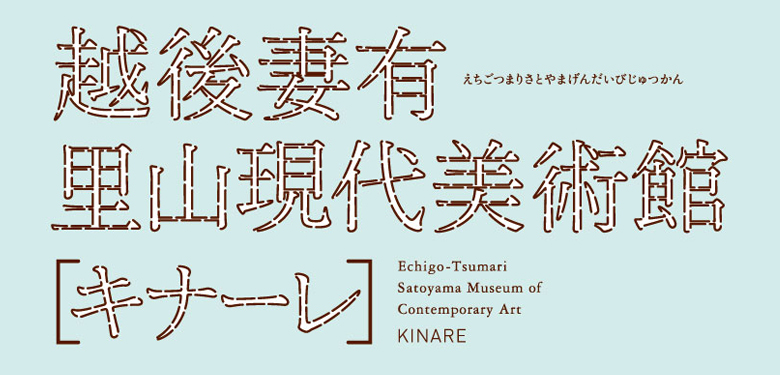




July 29 – September 17 ,2012
Opening Hours: 10:00- 17:00(During the exhibition is 9:00-19:00)
Closed: Wednesday(Open everyday during the exhibition)
Coordinated by Akemi Shiraha
This summer, a new museum, the Echigo-Tsumari Satoyama Museum of Contemporary Art will open in a building designed by Hiroshi Hara in Tokamachi city, Niigata prefecture. For the opening exhibition, internationally acclaimed artist Christian Boltanski will present a major installation entitled “No Man’s Land” in the open court at the heart of the museum.
The work consists of a pile of old clothes 9m high surmounted by a crane which, God-like, picks up and drops them again with devastating indifference, powerfully expressing Boltanski’s life-long preoccupations with the themes of life, death and memory. Based upon “Personnes” (Grand-Palais, Paris 2010) which toured to New York and Milan evoking in viewers memories of natural disasters and historical genocides, “No Man’s Land”, incorporates the experience of Boltanski’s visit to disaster affected areas of Tohoku and Echigo-Tsumari after March 2011. Reflecting on the experience, Boltanski said: “The most brutal thing that can happen to us is not the loss of life through physical death, but rather the loss of one’s name, one’s identity, the memory that one even existed.” This is exactly the feeling we confronted after the recent disaster. This artwork draws out our common bonds of feeling and understanding with others, and we can see it as extending this connection all who have lived and died throughout human history.
In the Echigo-Tsumari Art Field─The guiding concept of the Echigo-Tsumari Art Triennale has resonated with Boltanski since its first launch in 2000. His 2003 artwork “Voyage d’Eté” occupied the entire space of the abandoned Higashikawa Elementary School in the village of Matsunoyama. Consisting of musical instruments, slippers, plants, bedsheets and light, the work captured the memory of the place, and the poignancy of its disappearance. Subsequently, “The Last Class” was installed for the 2006 Triennale, and the school has in effect become a museum devoted to the theme of “absence”, generating an appreciation amongst visitors of the realities confronting this region.

Materials: clothes, crane, heartbeats, smoke machine, etc.
1944: Born in Paris, France
Selected Works, Exhibitions, Projects, Awards
2011: Chance Venice Biennale (Venice, Italy)
2010: Personnes MONUMENTA (Grand Palais, Paris, France), No Man’s Land (Armory, NewYork, USA), Les Archives du Coeur, Setouchi International Art Festival (Teshima, Kagawa, Japan)
2009: Christian Boltanski: La vie possible (Kunstmuseum Liechtenstein, Vaduz, Switzerland)
2007: Monuments Noirs (Kewenig Galeris, Köln, Germany), Time (Institut Mathildenhöhe, Darmstad, Germany), Annulé (Musée d’Art Contemporain Bordeaux, France)
2006: Praemium Imperiale in Honor of Prince Takamatsu (Japan)
2005: Prendre la Paroles (Marian Goodman Gallery, Paris, France)
2001: coming and going (Marian Goodman Gallery, NewYork,USA)
2000 / 03 / 06 / 09: Title, Echigo-Tsumari Art Triennale (Tokamachi, Niigata, Japan)
1990: Solo Exhibition (Art Tower Mito, Ibaraki / ICA Nagoya, Aichi, Japan)
開館時間=10:00-17:00[芸術祭期間中は9:00-19:00 / 企画展によって変更あり]
休館日=水曜日[芸術祭期間中は無休]
コーディネート:白羽明美
2003年に竣工した「越後妻有交流館キナーレ」は、この夏、新たに美術館として生まれ変わりました。その記念すべき開館特別展として、クリスチャン・ボルタンスキーの作品を展示します。彼は、世界的アーティストであり、越後妻有および大地の芸術祭に深くかかわり表現活動の場としてきました。
タイトルの《No Man’s Land》とは、「誰のものでもない、誰もいない土地」という意味です。膨大な古着が積み重ねられた山の上から、神の手を思わせるクレーンによって衣服が恣意的に掴み上げられ、落とされる―この巨大なインスタレーションで、ボルタンスキーは、彼の終生のテーマである「生と死」「記憶」を圧倒的な迫力で展開します。見る者に自然災害や歴史的災難(大量殺戮)を想起させた作品《Personnes(ペルソンヌ)》(2010年パリ・グランパレ)が、ミラノ、ニューヨークに続き、2012年夏、越後妻有にて《No Man’s Land》として発表されます。2011年3月の東日本大震災、長野県北部地震による東北・越後妻有の被災地をアーティスト自身が実際に歩き、その体験を通して再構想されました。ボルタンスキーは、人間にとって「最も残酷なのは肉体の死ではなく、一人ひとりの名前が奪われ、人格が奪われ、忘却されることだ」と語ります。それは、私たちが今回の震災で深く感じたことでもあります。体感を通して始まる他者への理解や共感を生み出す本作品は、人類の歴史における死者すべてとつながる場を創出するものと言えるでしょう。
大地の芸術祭の里では―
第1回展より大地の芸術祭の理念に共感し、参加してきたボルタンスキーは、2003年、十日町市松之山の東川にある旧東川小学校の校舎全体を使ったインスタレーション《夏の旅》を発表。楽器、スリッパ、植物、シーツ、証明を駆使して校舎全体で場の記憶とその不在を強烈に表現しました。そして2006年、同じ校舎で《最後の教室》を発表。廃校は「人間の不在」をテーマとした美術館としてオープン。これまでに多くの来訪者の、この土地の現実に対する理解と共感を生み出してきました。

素材:服、クレーン、心臓音、スモークマシンなど
1944:フランス、パリ生まれ
—
主な作品・展覧会・プロジェクト・受賞
2011:《Chance》ヴェネツィア・ビエンナーレ(ヴェネツィア)
2010:《Personnes》モニュメンタ(グランパレ / パリ)、
《No Man’s Land》(アーモリー / ニューヨーク) 、
《心臓音のアーカイブ》瀬戸内国際芸術祭(豊島 / 香川)
2009:Christian Boltanski: La vie possible(リヒテンシュタイン美術館 / ファドゥーツ)
2007:《Monuments Noirs》(ケヴェーニヒ・ギャラリー / ケルン)、
《Time》(インスティチュート・マツィルデンホーホ / ダルムシュタット)、
《Annulé》(ボルドー現代美術館 / ボルドー)
2006:高松宮殿下記念世界文化賞
2005:Prendre la Paroles(マリアン・グッドマン・ギャラリー / パリ)
2001:coming and going(マリアン・グッドマン・ギャラリー / パリ)
2000 / 03 / 06 / 09:《タイトル》大地の芸術祭 越後妻有アートトリエンナーレ(十日町 / 新潟)
1990:「個展」(水戸芸術館 / 茨城、ICA名古屋 / 愛知)